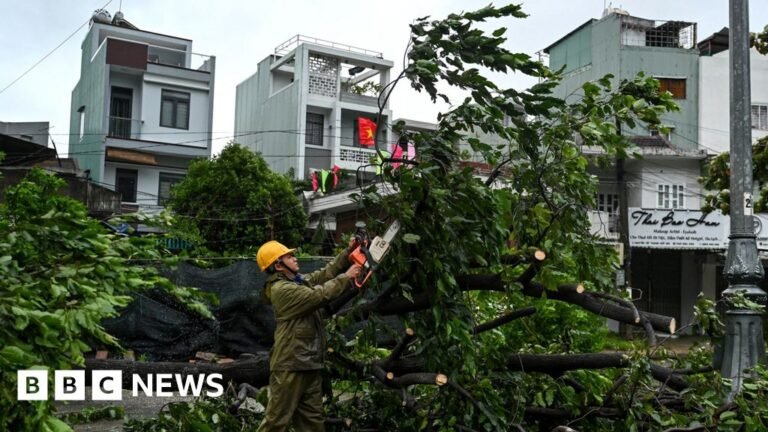Jonathan Head,South East Asia correspondent and
Sen Nguyen
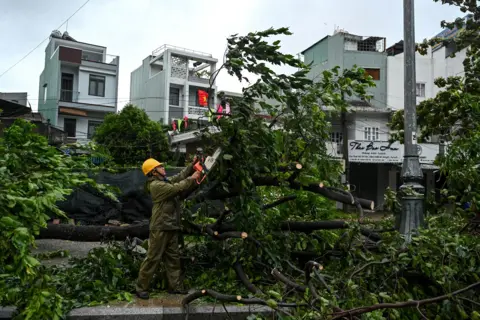 AFP via Getty Images
AFP via Getty ImagesTyphoon Kalmaegi, one of the year’s deadliest storms, has headed west to Cambodia and Laos after barreling through central Vietnam on Thursday with winds of up to 92mph (149km/h).
Earlier this week, the typhoon flooded entire towns in the Philippines, killing at least 114 people and leaving more than 120 missing.
In Vietnam, at least one person died after a house collapsed in Dak Lak province, while another two died in Gia Lai province, local media said. The government’s disaster management site has not yet released any death tolls or estimated damages.
This typhoon came even as central Vietnam struggled with the aftermath of record rainfall last week that killed nearly 50 people.
Ahead of the typhoon, Vietnam’s military deployed more than 260,000 soldiers and personnel for relief efforts, along with more than 6,700 vehicles and six aircraft.
Some airports and expressways in the country were closed and hundreds of thousands were evacuated.
Shortly after the typhoon made landfall in Vietnam at 19:29 local time (12:29 GMT), hundreds of residents in Dak Lak province called for help, local media reported.
Dak Lak province is approximately 350km (215 miles) north-east of Ho Chi Minh City.
Many people said their homes had collapsed or been flooded, while strong winds and heavy rain continued to batter the area.
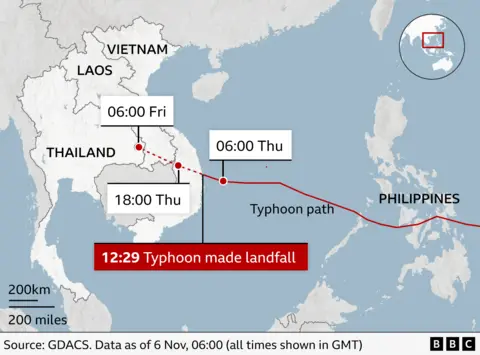
The Vietnamese national weather forecaster warned of flooding and landslides in hundreds of localities in seven cities and provinces.
There were reports of damage from several provinces, including roofs torn off homes, shattered glass panels at hotels, and trees uprooted or snapped along city streets and rural roads by powerful gusts.
On Wednesday morning, a reporter from AFP news agency saw officials knocking on the doors of homes in coastal communities and warning people to evacuate.
According to local media reports, Prime Minister of Vietnam Pham Minh Chinh held an online meeting to direct the emergency response.
“We must reach isolated areas and ensure people have food, drinking water, and essential supplies,” he was quoted as saying.
“No one should be left hungry or cold.”
 AFP via Getty Images
AFP via Getty ImagesBefore making landfall in Vietnam, the typhoon, known locally as Tino, left a trail of devastation in the Philippines.
At least 114 people were killed and tens of thousands were evacuated, particularly from central areas including the populous island and tourist hotspot of Cebu, where cars were swept through the streets.
Kalmaegi dumped the equivalent of a month of rain on the island in just 24 hours, sending torrents of mud and debris down mountainsides and into urban areas.
Stunned survivors who had made it to higher ground watched as buses and shipping containers were tossed about in the raging floodwaters.
The storm has wiped out entire neighbourhoods in poorer districts, where building materials are flimsier.
In Talisay City, which suffered some of the worst destruction, Mely Saberon looked on in despair at the pile of debris that had once been her home.
“We don’t have any home anymore,” she told the BBC. “We weren’t able to salvage anything from our house.
“We didn’t expect the surge of rain and wind. We’ve experienced many typhoons before, but this one was different.”
Residents have now started the backbreaking task of cleaning away the thick layer of mud, and picking through the wreckage for anything that can be used.
Early on Thursday, Philippines President Ferdinand Marcos Jr declared a state of emergency, the threshold of which involves mass casualty, major damage to property, and disruption to means of livelihoods and the normal way of life for people in the affected areas.
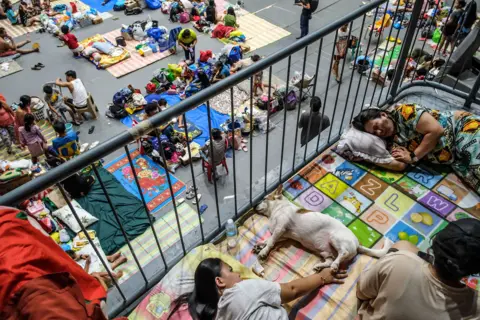 EPA
EPAVietnam has already been battling with floods and record rains for the past week.
Burst riverbanks have flooded some of the country’s most popular tourist spots, including the Unesco-listed city of Hue and historic hotspot Hoi An, where residents have been pictured navigating the city in wooden boats after the Hoai river overflowed.
Thailand is also bracing for the storm’s impact. Local officials have warned of flash floods, landslides and river overflows.
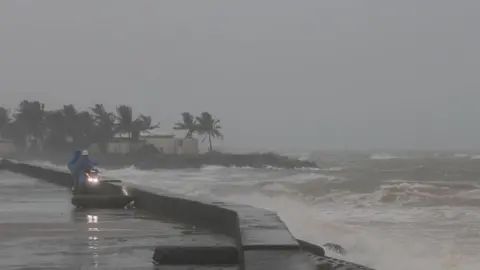 EPA
EPA
